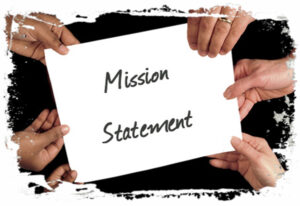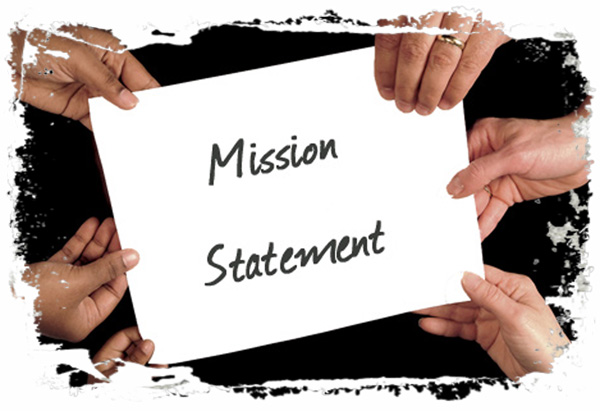
Every organization should have a mission statement. Dale McConkey, in How to Manage By Results, urges companies to develop a concise mission statement that is reviewed periodically. Then employees will feel more motivated to meet daily goals once they understand the company’s overall objectives.
A mission statement explains why a company exists. It outlines its purpose or main thrust. As Chris GowerRees explains in Weapons of Winners: “The main purpose, – and competitive advantage, of having a mission statement is to ensure that every employee is aware of the firm’s general goals and constantly strives, in a team setting, to attain them.” The most important factor in forming a cohesive group is a unity of purpose. Employees should be aware of this purpose.
The advantages of having a mission statement, both for ourselves and our companies, include the following:
- Helps us to keep us focused on what we consider to be important.
- Provides direction and purpose for ourselves and our organizations.
- Keeps us from being distracted or sidetracked by other opportunities.
- Helps us to draw up meaningful goals.
- Reminds us why we are in business.
- Helps prioritize the things we do.
Goals indicate what you will do, when you will do it and how you will do it. But a mission statement explains why you will do it.
Mission statements should state the type of business you are in, describe the service or products provided, and indicate the markets serviced. Some mission statements are several paragraphs in length, but the shorter the better. Times and technology change the market quickly these days. By making them brief we are forced to identify what business we are really in. Companies who recognized that they were really in the “idea” business, not the cassette tape or video business, are still in business today. Similarly manufacturers of board games, bicycles or skateboards are in the entertainment business, and railroads are in the transportation business.
Once the mission statement has been developed it should be reflected in any goals set by management or employees. It keeps the company “on course” and prevents individuals from pursuing objectives which are inconsistent with the purpose of the organization. Since the mission statement must be communicated to all employees it should be brief and simple. At most it should contain the type of business you are in, the services provided, the markets serviced, and the way you do things – your corporate philosophy.
I have virtually the same mission statement today and it has kept me from being sidetracked from what I do best. Each year I enter my mission statement in the space provided near the front of my Taylor Planner. Currently it reads as follows:
To help individuals and organizations manage their time and their lives, through time management training, products and services, so they are able to free up time to work on their personal and organizational goals.
Mission statements should be brief – one sentence if possible – so it can easily be reduced to writing and committed to memory. If it’s a company or organization, every staff member should understand it. It provides direction and focus in your business. It should be clear, brief and memorable.
The mission statement gives birth to goals or objectives, which in turn translate into plans – culminating in action. We succeed by working together to achieve goals which reflect our purpose or mission.
I encourage people to have a personal mission statement as well – one that does not conflict with the company mission statement, and reflects what they want to do with their life. My personal mission statement is essentially the same one that I use for my company because it is my passion. I truly believe it is my life purpose and I continue to do it long past the age of retirement.


Recent Comments